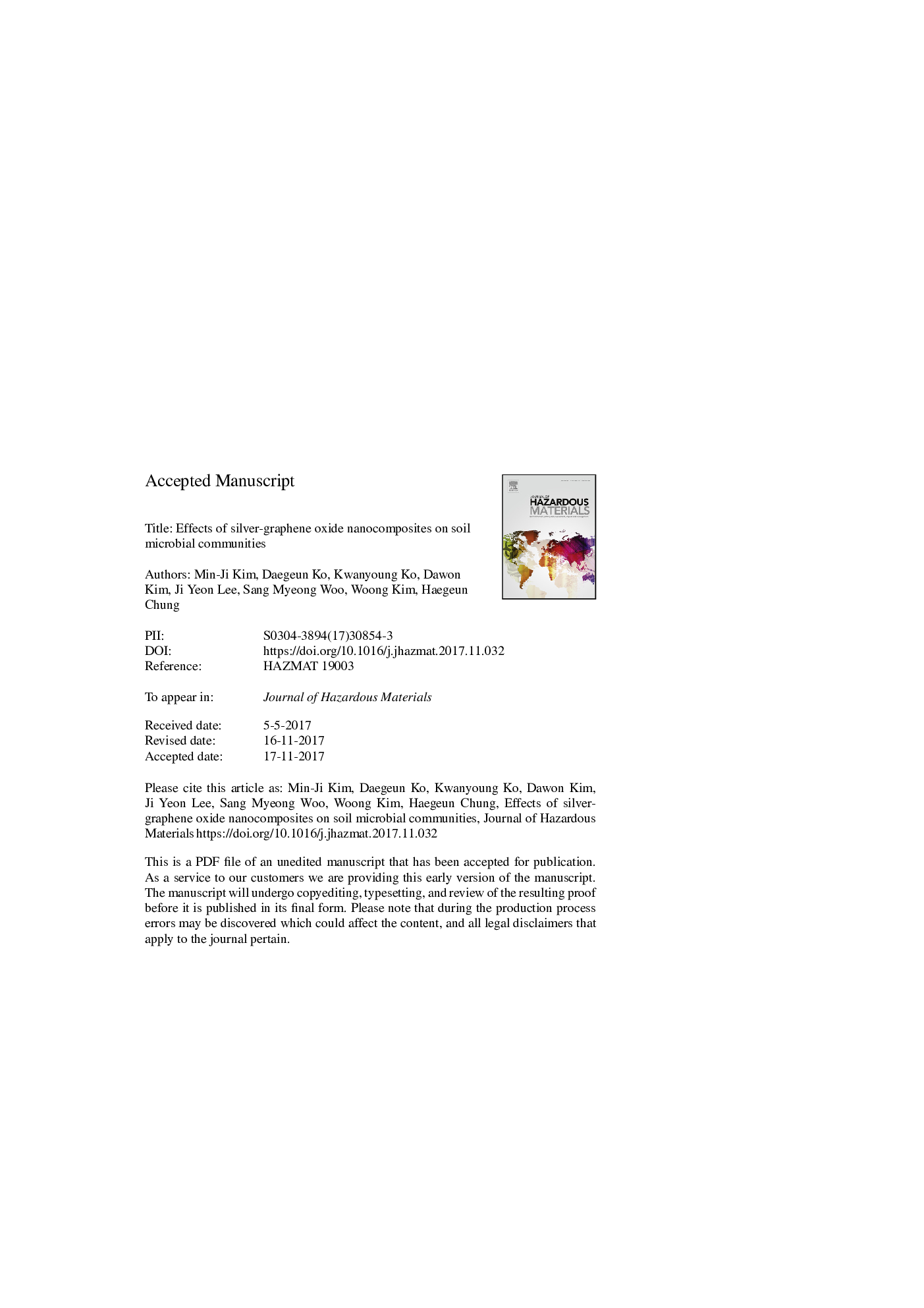| Article ID | Journal | Published Year | Pages | File Type |
|---|---|---|---|---|
| 6969211 | Journal of Hazardous Materials | 2018 | 38 Pages |
Abstract
Due to the application of silver-graphene oxide (Ag-GO) in diverse fields, it is important to investigate its potential impacts on the environment including soils. In this study, the response of microbial communities in soils treated with Ag-GO synthesized by glucose reduction was determined by analyzing enzyme activities, biomass, and inorganic N concentrations and by pyrosequencing. In soils treated with 0.1-1â¯mg Ag-GO gâ1 soil, the activities of β-glucosidase, cellobiohydrolase, and xylosidase decreased up to 80% and NO3â concentration decreased up to 82% indicating inhibited nitrification. Within the bacterial community, the relative abundance of Acidobacteria and Cyanobacteria in soils treated with Ag-GO were lower than that in control soil. Meanwhile, the relative abundance of AD3 and Firmicutes tended to increase under Ag-GO treatments. These changes in bacterial community composition reflected lowered activities associated with C and N cycling. On the other hand, microbial biomass showed no distinct change in response to Ag-GO treatment. Our study can serve as important basis in establishing guidelines for regulating the release of nanocomposites such as Ag-GO to the soil environment.
Related Topics
Physical Sciences and Engineering
Chemical Engineering
Chemical Health and Safety
Authors
Min-Ji Kim, Daegeun Ko, Kwanyoung Ko, Dawon Kim, Ji-Yeon Lee, Sang Myeong Woo, Woong Kim, Haegeun Chung,
